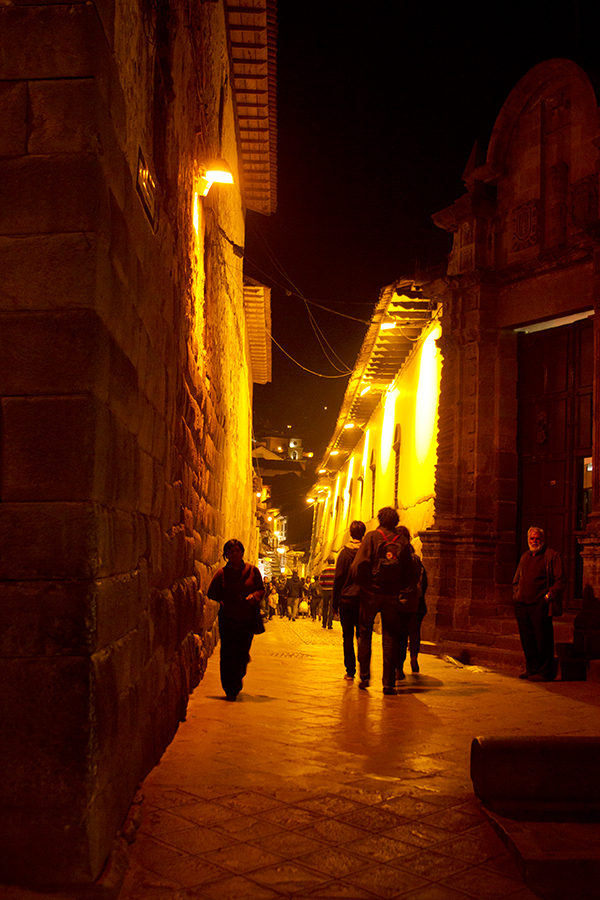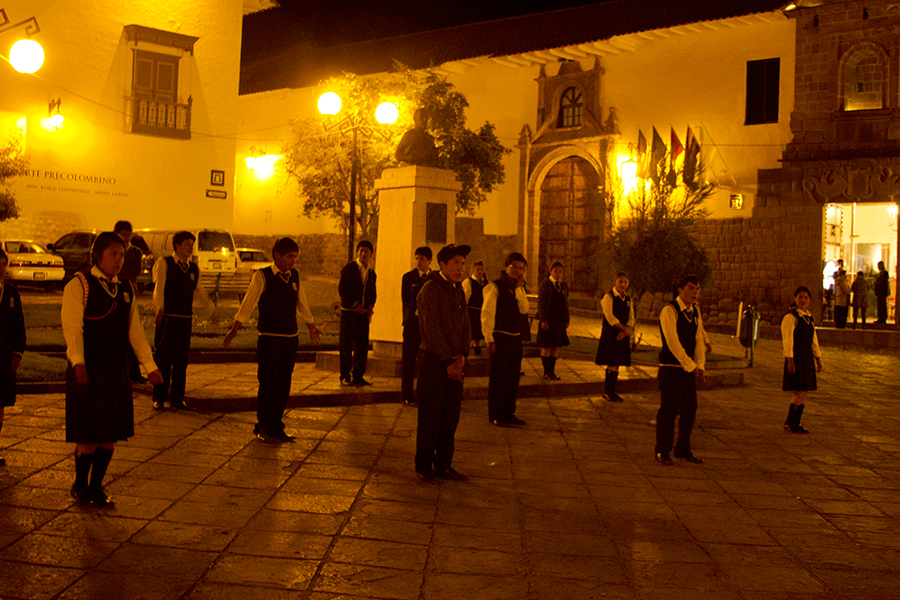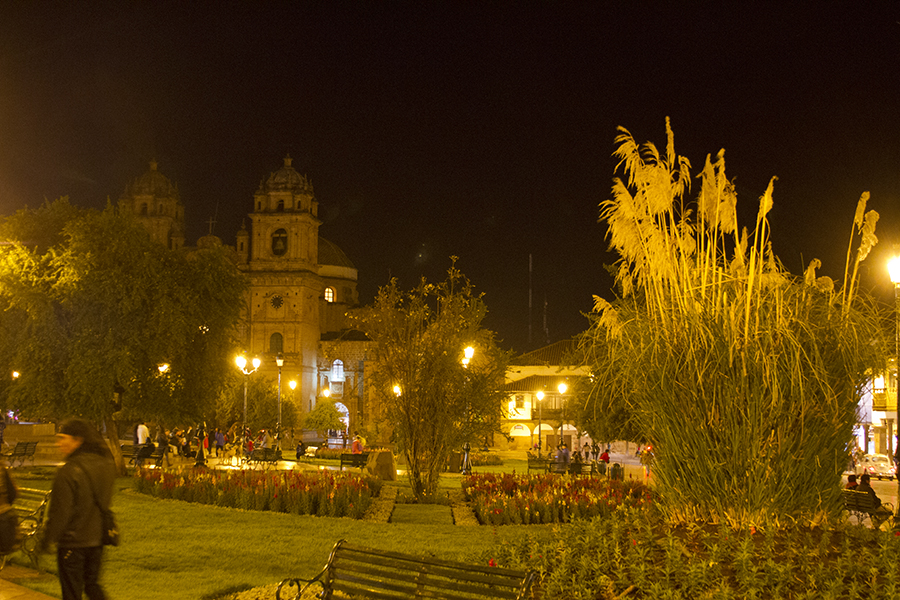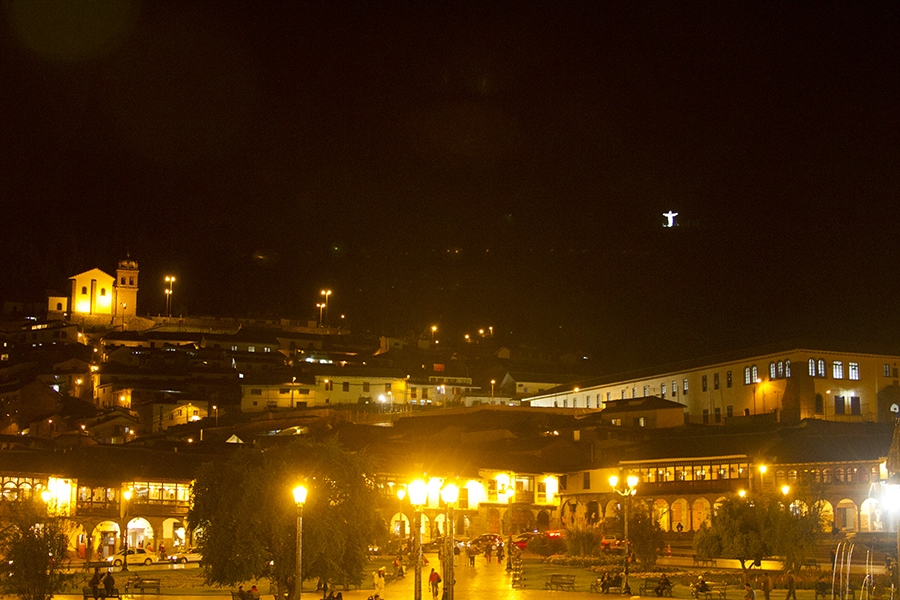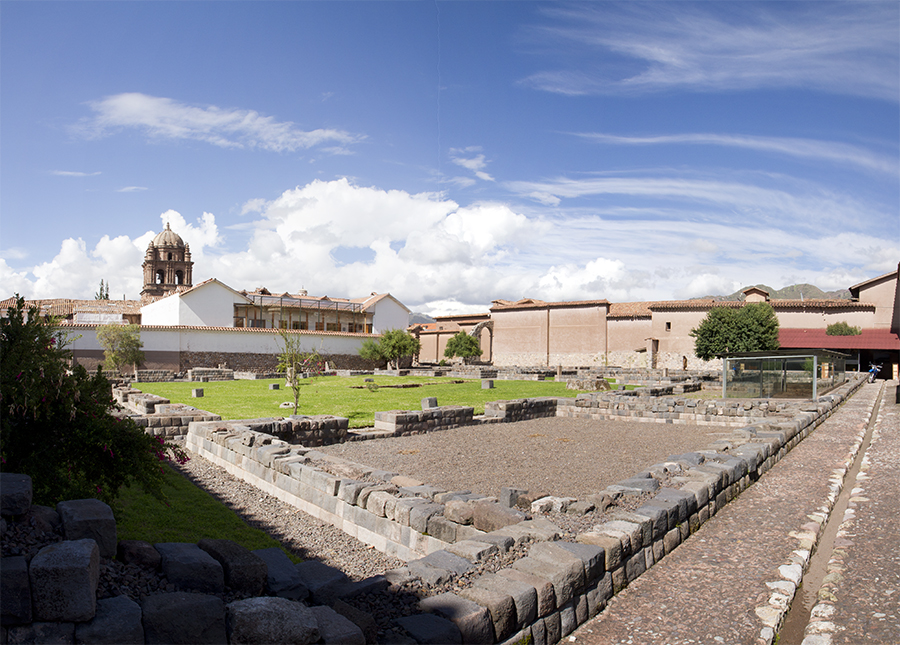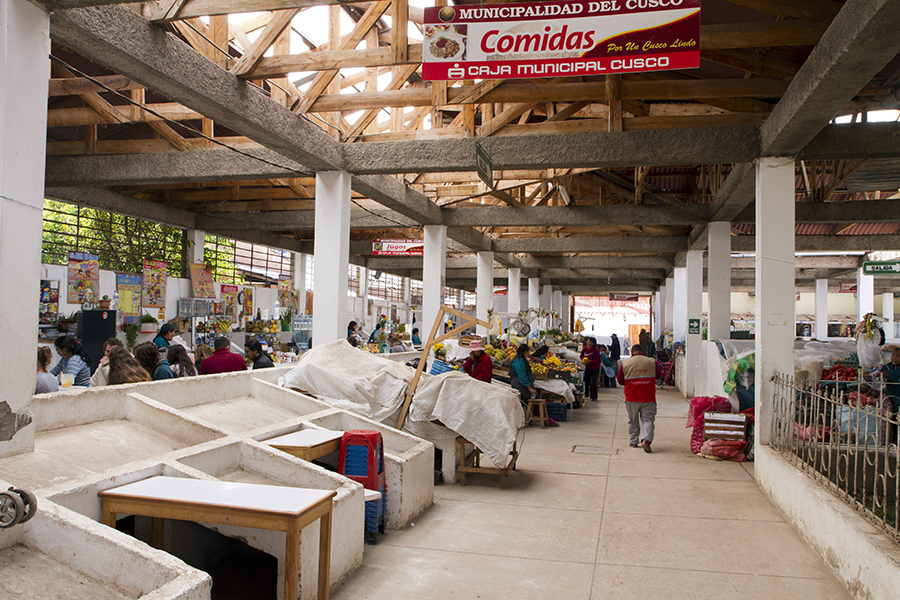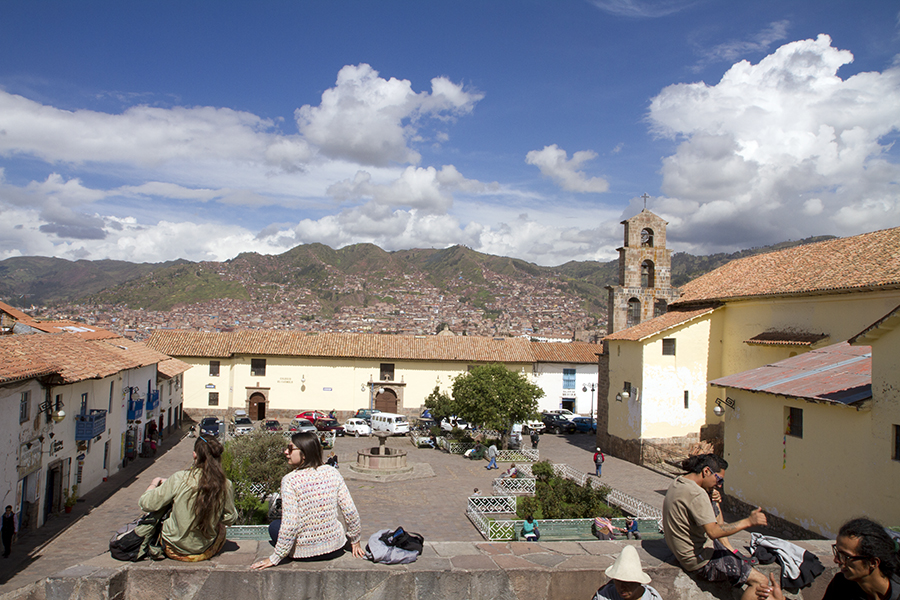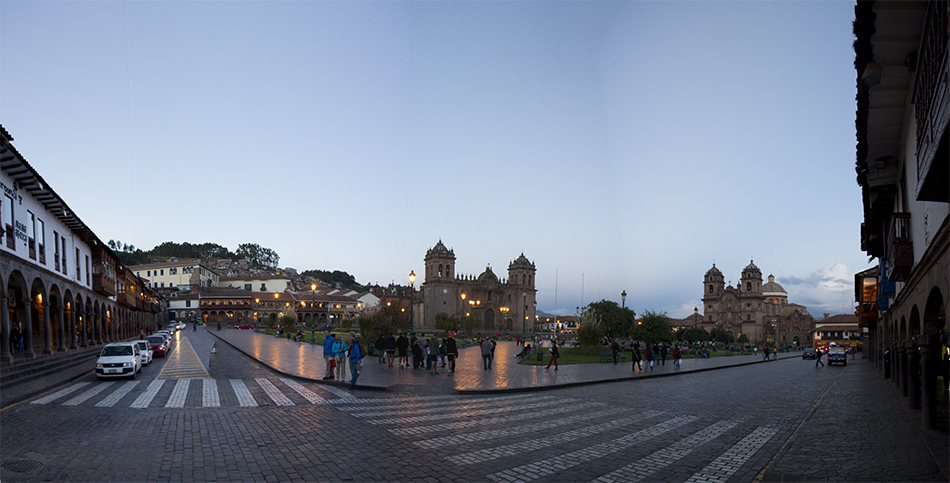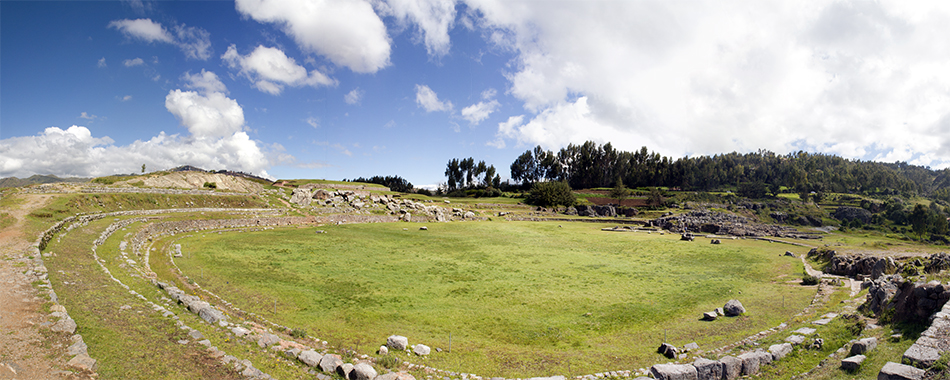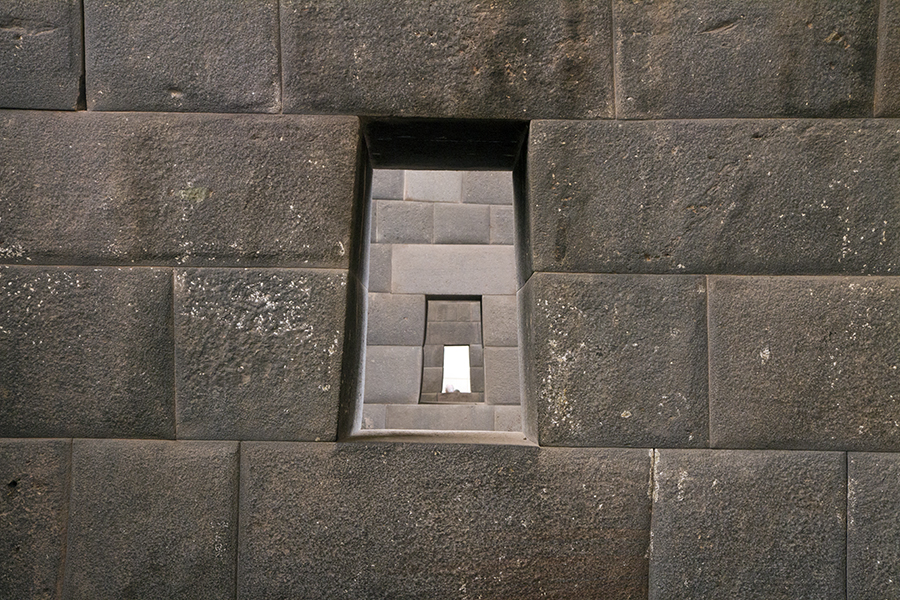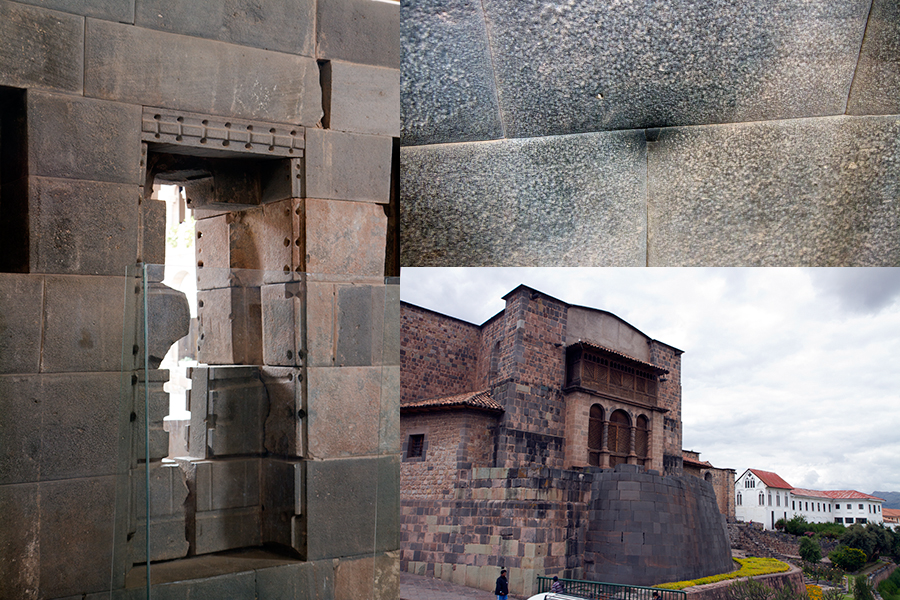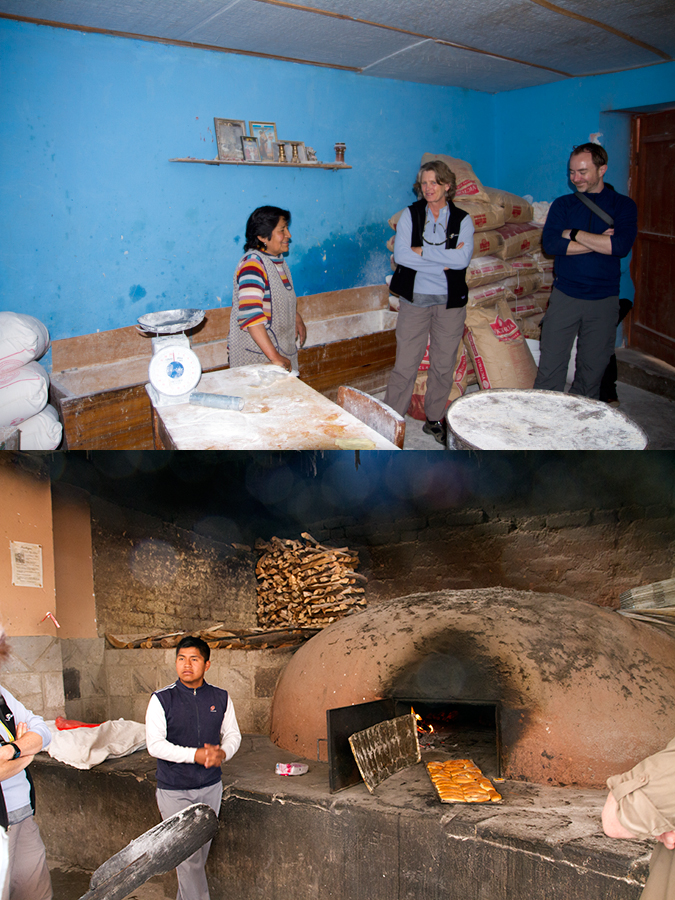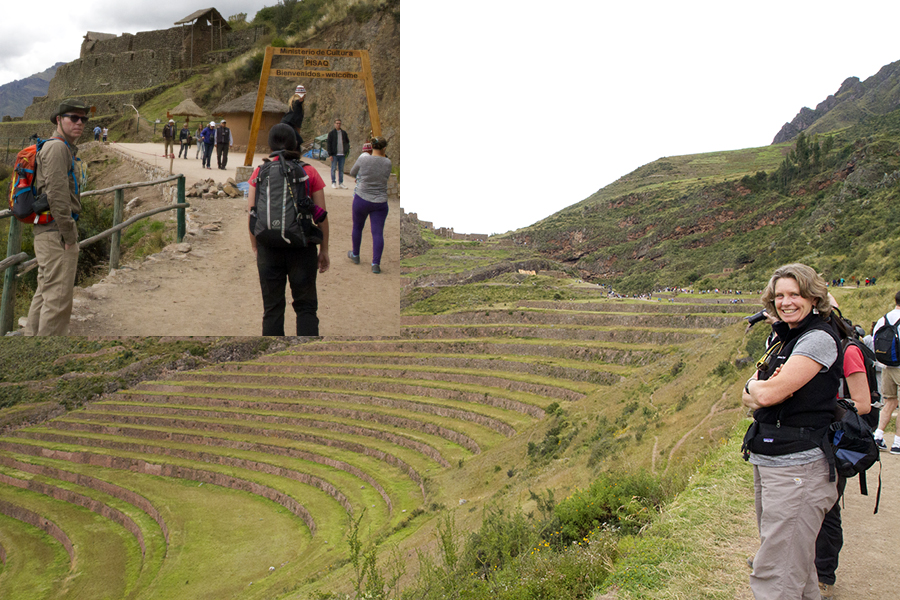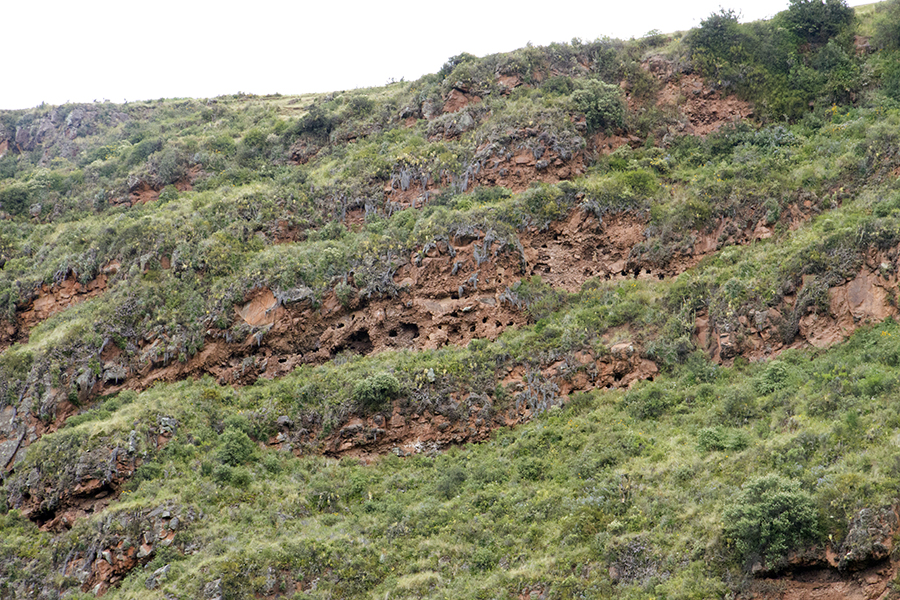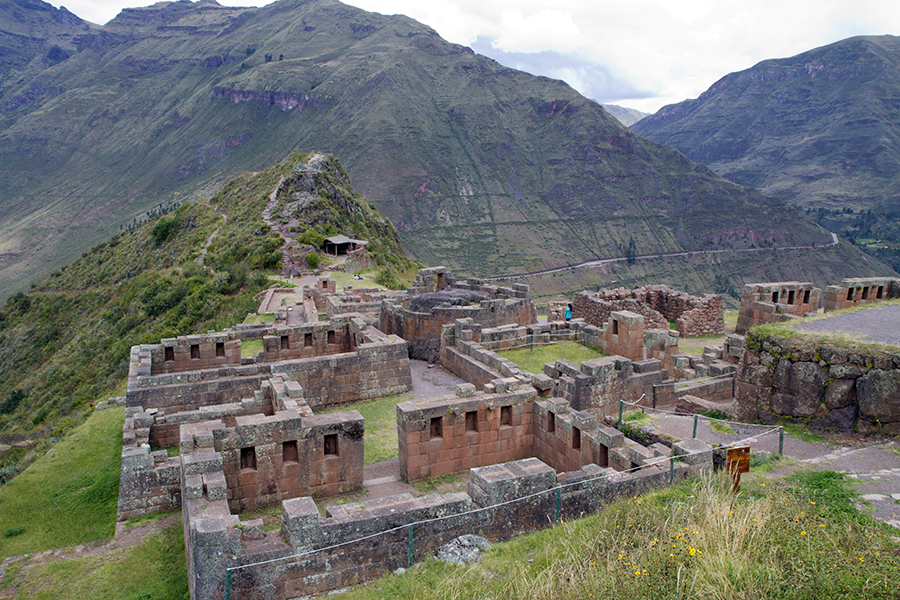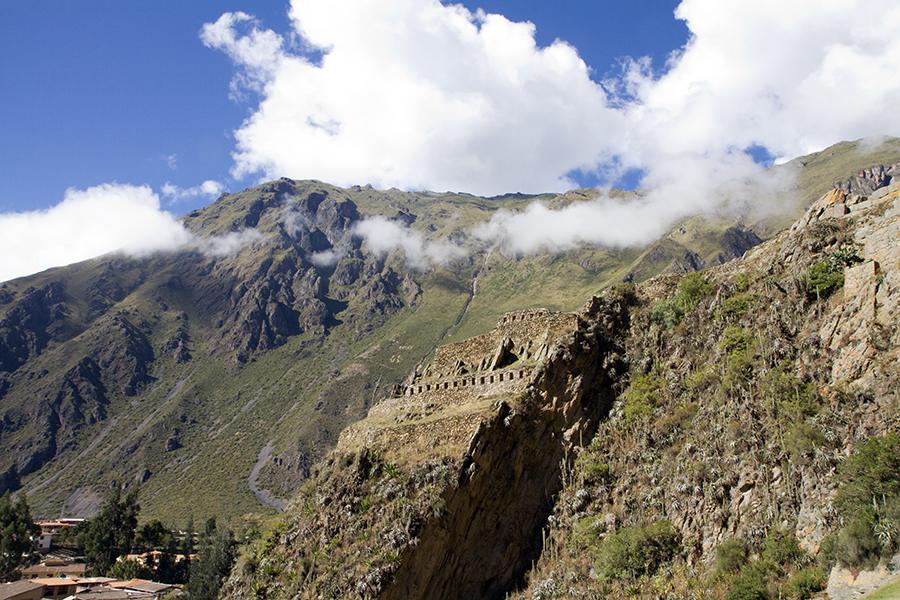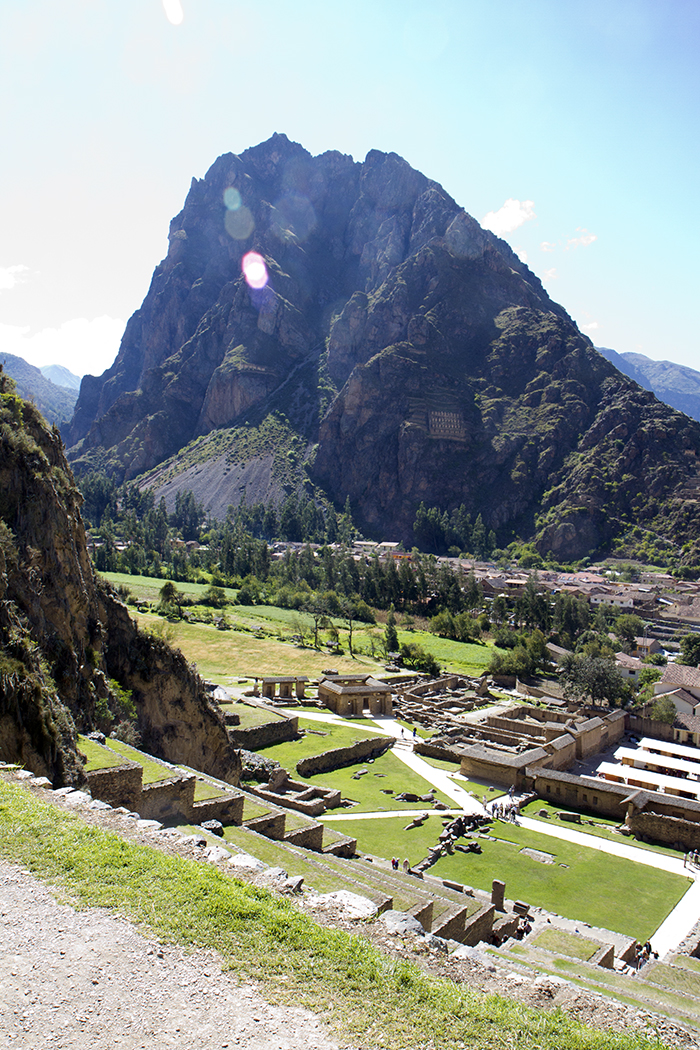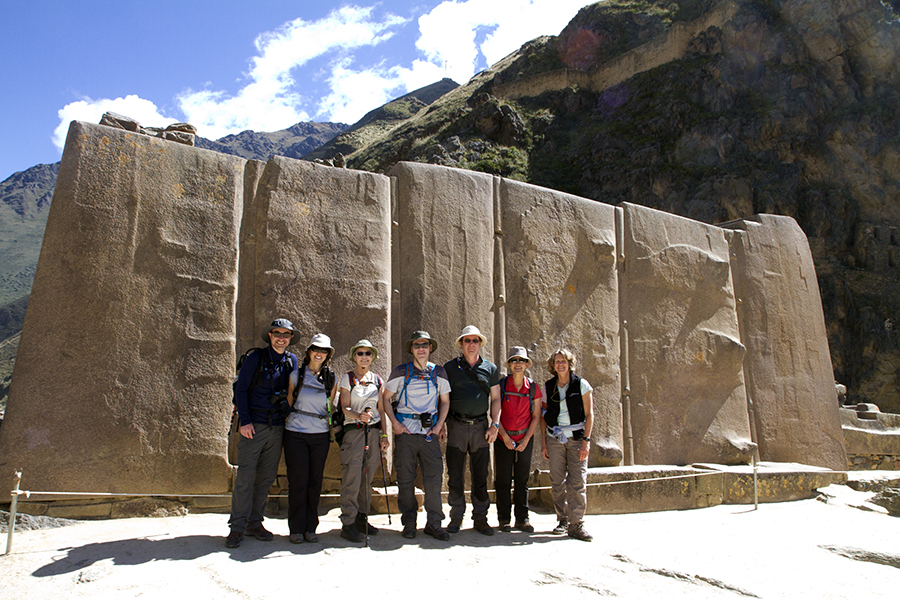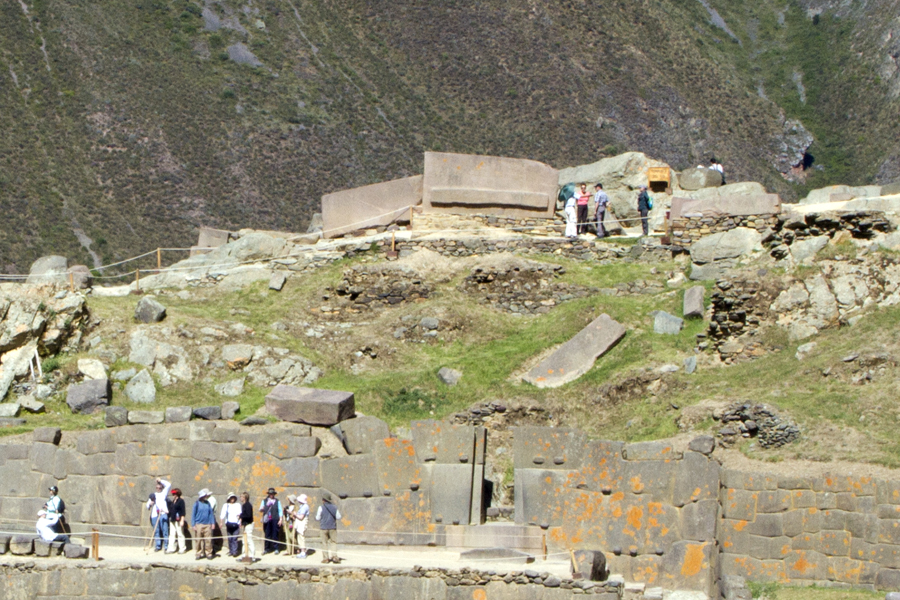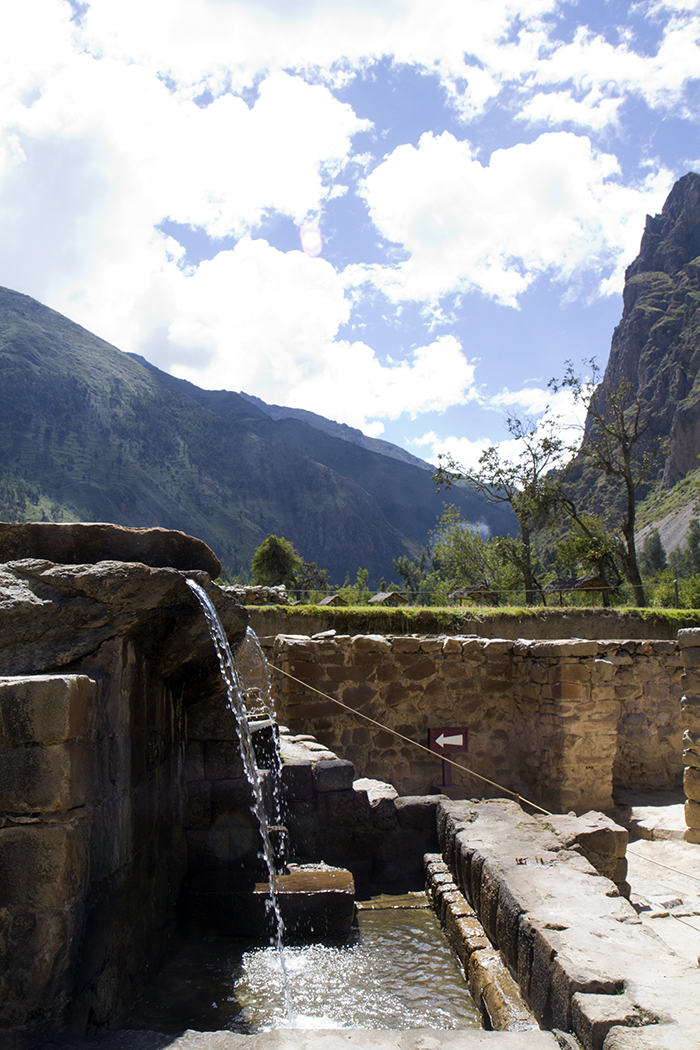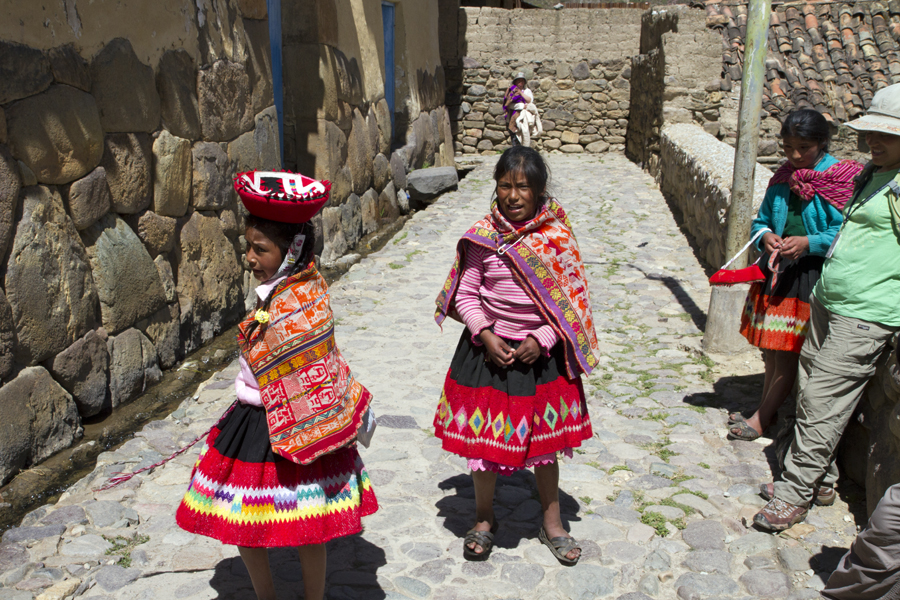We arrived in Cuzco in mid-afternoon and by the time we settled into our hotel (right next to Plaza De Armas) and met our tour leader Holy for a quick orientation chat, it was already dark. We decided to go for a stroll and discover the immediate neighborhood around the hotel. We also wanted to scope out several restaurants in the area and decide where we would eat.
Near the hotel, we saw our first Inca Wall, down a narrow pedestrian street. Little did I know when I took this picture that somewhere down the wall on the right there is a 12-cornered stone – we found it later…
A little further, in the square in front of the Monasterio Hotel where we will be staying later, there were school children hard at work rehearsing a dance routine. We saw several such events in the next few days and were told that it is not unusual for classes to organize something special for “Mother’s Day” which would be celebrated on the second Sunday in May.
Plaza de Armas – the central square in today’s Cuzco (actually it was already the central square in Inca Times too).
Before dinner, we had a drink in a cafe overlooking the Plaza; Cuzco is surrounded by hills and one of these is visible on the left. In the distance, a statue of Christ (similar to, but smaller than the one in Rio) seemed to float above the city like a ghostly figure.
The next day, Bee and I explored the city on our own. We first stopped at an attraction that is not in any of our guides as it was only discovered and developed a few years ago. Right in the centre of Cuzco, the remains of several Inca houses have been discovered. The site is called Kusicancha and I was able to find very few references to it even on Google search! The church in the background is Santo Domingo, part of the Qorikancha Complex which we will visit later with our group.
Holly, our tour leader had suggested that we should go explore the neighborhood of San Blas to the North of the center. It is a quiet area where artisans and artists tend to congregate. On the way there, we stopped at the San Blas Market. Typical local market, with very few foreign visitors. One whole row was occupied by stalls making fresh juice. We stopped at another stall where an old lady made chicken noodle soup; local people already eating were very nice and made room for us on the bench; they were also very surprised when we dug into the hot chilly sauce that went perfectly with the soup. We declined the offer of seconds, as this was only a snack before lunch.
The main square in San Blas. The centre of Cuzco is visible down the hill. We stopped for lunch at a restaurant right on the square. They had a special ceremony for a group of French tourists and prepared a Pancha Manca. We will actually have our own during our hike, so I will describe it at that time.
Coming back from San Blas, we made sure to look for the “famous” 12-cornered stone in the Inca Wall. Here it is – photo is courtesy of Bee as I did not bother to take a picture – my bad!
We saw stones with a lot more corners than this one (up to 34 I think) but these were corner stones in three dimensions – this is the most we saw in a flat 2-dimensional stone!
After San Blas, and a short siesta back in the hotel, we went to the main market in Cuzco, San Pedro. There are juice ladies here too and an extensive selection of typical Peruvian flat bread. Saleswomen were not very pushy, except for the souvenir sellers. There was a lot of activity around the market as well making for a very lively neighborhood.
Plaza de Armas panorama in early evening. Yes, you can see two major churches on Plaza de Armas – there are actually four churches in total on the square as there are two smaller churches on either side of the Cathedral which you can see here on the left.
The following day, the actual “Tour” started. We started the visit with Sacsawaman, an Inca fortress just above Cuzco. Until we arrived here in Peru, I did not realize that the Inca Empire only lasted a little more than 100 years. Everything that we will see as “Inca Ruins” on this trip was built between the 15th and 16th century; construction was stopped while in full expansion by the Spanish Invasion.
If I were in Italy, I would say this is a Roman Arena – but here, it was thought to be a place for locals to meet for ceremonies.
Sacsawaman is enormous. The scale is what is so surprising here. It is believed that there were 20000 people busy with the construction at the peak. This required incredible logistics as all these workers needed to be fed, clothed and material and equipment needed to arrive from around the empire to support construction – the Inca Empire grew very fast because they were very good organizers, and offered a “better” way of life to local populations. If you did work for the state, you would be fed and well taken care of.
Everybody has heard of the amazing precision with which the Incas would fit their stone walls. It is not until you see these up close that you realize how incredible they are. This is a major wall in Sacsawaman – every stone is different and every one fits perfectly. Holly, who is pictured below, was our tour leader. She has been living in Peru for many years and did her PhD about the life and music of the Q’eros People who live in small communities in the Andes near Cuzco. She was able to give us insights not only on the history of Peru, but also the current situation and culture. It was fascinating.
After the fortress, we visited a smaller temple located nearby called Qenqo.
The Incas were particularly fond of caves. They believed that they gave access to Paccha Mama or Mother Nature, a very powerful divinity. They often built temples into caves and in this particular cave they had a very important “sacrifice” altar which was probably used for animal as well as human sacrifices over many years.
As I said earlier, the growth of the Inca Empire we stopped rather suddenly by the Spanish conquest. No place is more representative of the superimposition of the two cultures than the Sun Temple at Qorikancha. There are ancient Inca ruins that were later incorporated into a Christian monastery. First, the precision of Inca construction – the windows line up perfectly.
Several really important features can be found in this temple – a cut out of a wall showing how the stones actually fit together – they are not just placed one on top of the other but there are systems of tongues and grooves to hold them together. To the left is the smallest construction stone we saw (look where the stones are blackened by excessive human contact and you will see this small wonder)! It is actually less than 1 inch (2.5 cm) across! Somebody must have made a cut where they should not have, and to make sure that the fit remained perfect, an additional tiny tiny stone was required.
The last picture shows the church of Santo Domingo built on top of the old Inca wall – the Spanish after the conquest showed their superiority by using Inca foundations and walls as part of their own constructions.
In the evening, we met a friend of Holly from the Q’eros village who happened to be in Cuzco. He was willing to share his life style with us and played some traditional music on local instruments. Very interesting to get a glimpse at a totally different way of life from a relatively isolated society (it takes several hours of walking for people from the village to reach the nearest road from where they can take a bus to Cuzco; as little as ten years ago, however, it would take several days to make the same journey).
The next day, we left Cuzco and made our way to Pisaq, a small town in the Sacred Valley on the Urubamba River. We first stopped at a local bakery where we were shown how to make the local soft bread. The mother has been doing this every day for the past 40 years. Her son later explained how the oven works and how they bake the bread. He goes to University in Cuzco, but happened to be home as today was May 1 – Labor Day in most Latin American countries.
The ruins at Pisaq extend over a very large area just above the city. We started at the top and slowly worked our way down. The first area was covered in terraces where the food was grown for the city.
In the cliffs nearby we could see many entrances to ancient tombs. The Incas buried their dead inside small caves usually dug in cliffs like these; they mummified the bodies in the fetal position and added to the graves many objects they will need in the after-life. Most of these were ‘destroyed’ before modern times and therefore before they could be studied. In other areas, some recently discovered tombs are kept undisturbed to this day in order to preserve the evidence for the future. Each hole you can see on these cliffs was a burial site.
Another view of the terraces. In the inset, you can see a set of wing-steps built into the wall. They were used to move from one level to the next without having to walk all the way to the end.
A group photo! Rosa was our local guide for the day. She was also the guide the previous day in Cuzco.
On a promontory just above the city is the temple of Pisaq. Of the several buildings that still exist, the most significant is the temple of the Sun – it is the round building to the left of the woman with the very bright blue rain jacket. Inside this temple there is a flat rock that is believed to have been used for astronomical observations and predictions. We were unfortunately not allowed to go into the building.
A view of the Urubamba Valley upstream of Pisaq. The terraces visible to the right of the picture were actually designed and built by the Incas and are still in use today. There is a very unique harmony between the shape of the terraces and that of the mountain in this place.
After lunch, we made our way to Ollantaytambo, another city along the Urubamba river where we spent the night. On the way, while everybody else was asleep, I sat next to the driver and we passed a small town where I saw what appears to be a sign for a Bull Fight. With my poor Spanish I was not able to get a full explanation from the driver on what it was, but a later inquiry indicated that they have some bull fights similar to what they do in Spain, but apparently much bloodier. We saw other bullfighting rings later on our travels and saw dueling bulls near Chivay, at the beginning of the Colca Canyon which we saw at the end of the trip (will be covered later!)
In Ollantaytambo, from the hotel, we had a pretty good view of Inca warehouses that sat across from the main temple. The Sacred Valley is actually a series of agricultural zones and temples between Cuzco, the Capital of the Inca empire, and Machu Picchu, their most sacred town.
From the temple of Ollantaytambo we had a better view of the warehouses on the opposite mountain with the town itself and the lower portion of the temple in the foreground.
Ollantaytambo has the unique characteristic that it was left unfinished by the Incas. We can glimpse at several features that only appear here and are probably the tell tale signs of their construction techniques. Many stones in this temple have the small appendages that can be seen here. They were probably used for transportation and later removed when the surface of the stone was finished.
Here is an almost complete doorway.very few doorways still have the original lintel on top.
Almost at the top of the temple, there is an impressive series of very large stone which are decorated with geometric designs. This is a very unique feature, that we only saw in this temple.
A better view of the formation and the view of the valley behind it. These stones also appear to be unfinished, with some of them decorated while others are still very rough, almost as if they just came from the quarry.
Time for another group photo, better posed this time. Our poor guide was saddled with seven cameras and forced us to pose for about 30 pictures!
This is the temple area seen from terraces not too far.
The interesting bit here are the two large horizontal stones above the hill and on both sides of the tourists. They are stones that were still being transported into the site when it was abandoned. They rest on a rough ramp that is built with stones at the bottom and what appears the be mud on top. It is surmised that they built these ramps and then wetted the mud in order to facilitate sliding the stones on top.
There is a small river that comes down between the mountains into the Urubamba river right at Ollantaytambo. The Incas used this river to create fountains and natural baths at the base of the temple complex. As we will see in later temples, the closer we get to Machu Picchu, the more baths are present in the temples, but nobody really knows what this means or why people seemed to wash more and more as the approached.
After the temple we walked around the city itself. We ran into two young girls who offered to sing for us if each of us would give them a few coins. The older one seemed a little embarrassed but the younger one, with the hat, really got into the signing and dancing.
After lunch, we headed towards kilometre 77 and started our hike to Machu Picchu on the Inca Trail. That will be the subject of the next post, so I am afraid you are going to have to wait a little while longer for that.
This portion of our trip was also organised through Wilderness Travel and is part of their “Inca Trail to Machu Picchu” trip (http://www.wildernesstravel.com/trip/peru/inca-trail-machu-picchu-trek). I highly recommend this trip. We really enjoyed all of it.
(813 Page Views)

